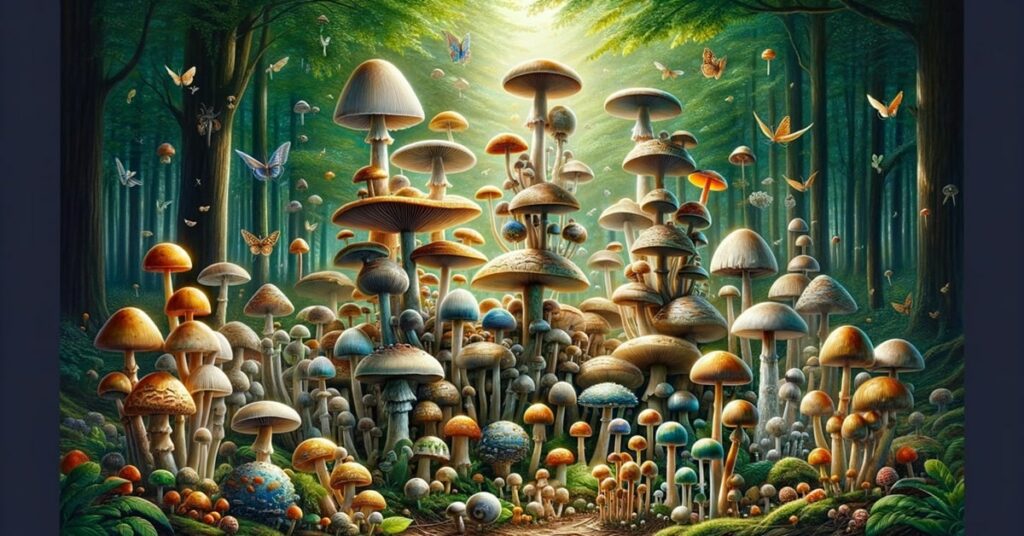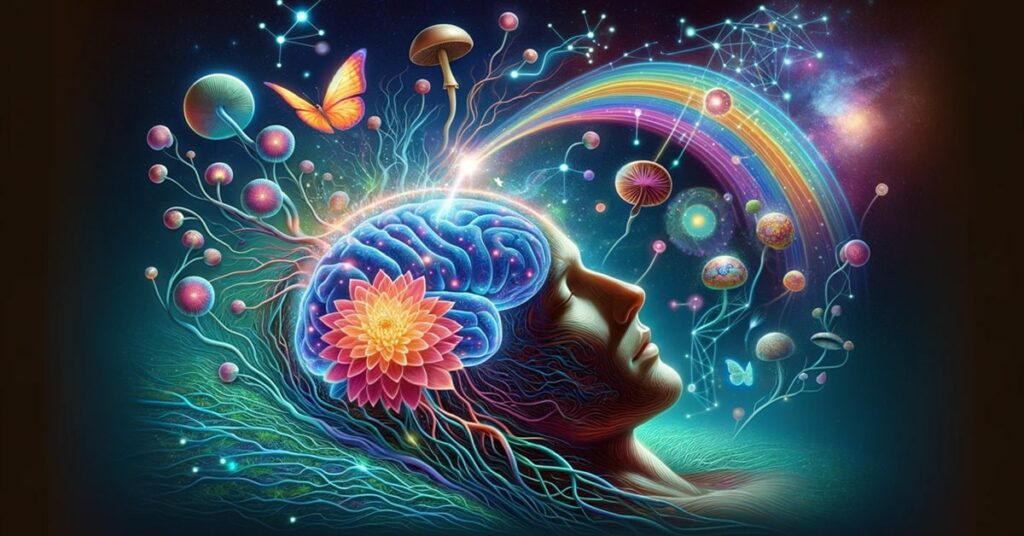Psilocybin mushrooms, often referred to as magic mushrooms or simply shrooms, have played a significant role in human culture and medicine for thousands of years. Originating from various parts of the world, these fungi are known for their psychoactive properties, primarily due to the presence of psilocybin, a naturally occurring psychedelic compound. Cultures throughout history have used these mushrooms for their spiritual and therapeutic effects, believing in their power to unlock profound psychological experiences and insights.
As we delve into the intricacies of how long the effects of shrooms last, it’s essential to approach the topic with both curiosity and caution. The duration and impact of shrooms can vary widely among individuals, influenced by factors such as dosage, mushroom species, and personal physiology. This article aims to explore these variables in depth, providing a comprehensive guide to understanding the duration of shroom effects, proper storage methods to preserve their potency, and the legal and health considerations associated with their use.
By addressing common questions like how long do shrooms trips last, how long do shrooms last in your system, and how long do dried shrooms last, we hope to offer valuable insights for both the experienced and novice users. Whether you’re seeking to understand the ephemeral nature of a shroom trip or the best practices for storing these delicate fungi, our guide will navigate through the most pertinent information surrounding psilocybin mushrooms.
How Long Do Shrooms Last?
The experience induced by psilocybin mushrooms, commonly known as shrooms, spans a wide range of durations, generally lasting from 4 to 6 hours. The actual length of a shroom trip, including both the onset of psychedelic effects and their gradual subsidence, hinges on a variety of factors. These include the specific type of mushroom consumed, the quantity ingested, and individual differences in metabolism and physiology.
The Average Duration of a Trip
Typically, the effects of shrooms begin to manifest within 20 to 40 minutes following ingestion, peaking around the 2 to 3-hour mark before gradually tapering off. The concentration of psilocybin, the psychoactive compound found in these mushrooms, varies significantly across different species, affecting the trip’s intensity and duration. Dried shrooms, in particular, often have a more concentrated psilocybin content compared to fresh ones, potentially elongating the effects.
Factors Affecting Trip Length
The length and intensity of a shroom trip can also be influenced by the user’s body weight, emotional state, and whether the mushrooms were consumed on an empty stomach. These elements can modify not only the trip’s duration but also its depth and perceived significance. The process of drying mushrooms serves to preserve psilocybin, making dried shrooms not only more potent but possibly extending the duration of their effects as well.
When on a shroom trip you might ask “how much do cows weigh?” or you might want to tell your friend to shut up in Spanish.
Immediate Physical and Psychological Effects
The immediate effects of consuming psilocybin mushrooms involve a complex array of physical and psychological changes that commence within 20 to 40 minutes of ingestion. Physically, users might notice alterations in heart rate, blood pressure, and pupil size, along with potential feelings of nausea or discomfort. Psychologically, the experience is marked by profound shifts in perception, mood, and thought processes. Individuals often report vivid visual and auditory hallucinations, intense emotional responses, and a distorted sense of time, contributing to the overall depth and duration of the psychedelic journey.
Lingering Effects and Detection in the System
Concerning the duration of these effects, it is important for users to be aware that while the most immediate and noticeable impacts of shrooms tend to fade after about 6 hours, the substance can remain detectable in the body for up to 24 hours. Questions like “how long do shrooms last in your system?” and “how long do shrooms effects last?” highlight the distinction between the detectability of psilocybin and the lasting psychological changes it can induce. Even after the primary effects have subsided, many individuals describe a prolonged period of emotional sensitivity and altered perception, suggesting a lasting influence that extends well beyond the initial experience. This extended impact is not merely a residue of the drug’s presence but is integral to the therapeutic and transformative potential attributed to psilocybin mushrooms.
Long-Term Impact on the Body
The exploration into the long-term effects of psilocybin mushrooms on the human body reveals a complex picture, one that intertwines potential therapeutic benefits with considerations for safety and well-being. Unlike the immediate and transient effects that fade within hours, the long-term impact of shrooms involves more subtle and enduring changes, particularly in the context of mental health and cognitive functioning.
Research and anecdotal evidence suggest that the use of psilocybin mushrooms can lead to lasting positive changes in personality, such as increased openness and a greater capacity for empathy and connectedness. These effects are thought to stem from the profound and introspective experiences often encountered during shroom trips, which can alter one’s perspective on life and foster a deeper understanding of the self and others.
However, it’s crucial to approach the use of psilocybin with caution, especially regarding dosage and frequency. Excessive or inappropriate use can pose risks, potentially leading to psychological distress or exacerbating pre-existing mental health conditions. The key to harnessing the positive long-term effects of shrooms lies in responsible use, ideally under the guidance of professionals in therapeutic settings where psilocybin is legally permitted for such use.
Moreover, ongoing studies aim to quantify and better understand these long-term effects, looking at the potential of psilocybin to aid in the treatment of depression, anxiety, PTSD, and addiction. While early results are promising, indicating the possibility of significant and lasting benefits from psilocybin therapy, it’s important to recognize that research is still in its early stages. As our understanding of psilocybin mushrooms and their impact on the human body and mind continues to evolve, so too will our insights into their potential for healing and growth.
Proper Storage and Shelf Life of Psilocybin Mushrooms
Best Practices for Storing Shrooms
The key to maintaining the potency and safety of psilocybin mushrooms over time lies in understanding and implementing effective storage solutions. Queries about how long shrooms last in storage or their shelf life underscore the importance of proper preservation techniques. To maximize the shelf life of dried mushrooms, it is crucial to store them in conditions that minimize moisture, light, and temperature fluctuations. Airtight containers, such as vacuum-sealed bags or jars with tight-fitting lids, are ideal for keeping shrooms dry and protected from light exposure. Storing them in a cool, dark place, such as a cupboard or a drawer, further helps in preserving their psilocybin content, potentially extending their potency for months or even up to a year.
Impact of Storage Methods on Potency and Safety
Different storage methods can significantly affect the potency and safety of psilocybin mushrooms. The question of how long shrooms last in a mason jar, for instance, reveals the effectiveness of using sealed containers to maintain their quality over time. When properly dried and stored away from light, shrooms kept in a mason jar remain potent for several months to a year. On the other hand, freezing shrooms is another viable long-term storage method, addressing concerns like how long shrooms last in the freezer. It’s essential, however, to ensure the mushrooms are completely dried before freezing to avoid the formation of ice crystals, which can damage their cell structure and potentially diminish their psychoactive effects.
By adhering to these storage practices, individuals can significantly extend the life of their psilocybin mushrooms, ensuring they retain their desired effects for future use. Whether opting for a mason jar or the freezer, the primary goal is to shield the mushrooms from moisture, light, and excessive heat, all of which can degrade their quality and efficacy.
Identifying Expired Shrooms
Signs of Degradation
Understanding the lifespan of psilocybin mushrooms is key to ensuring their quality and safety for consumption. Questions such as how long do shrooms last before going bad and how long do shrooms last before they expire are essential in this context. Indicators that shrooms have surpassed their prime include a musty or off smell, a change in texture, and visible signs of mold or discoloration. While properly dried and stored mushrooms can retain their potency for several months up to a year, exposure to moisture can significantly shorten this duration, leading to these adverse changes. It’s advisable to trust your senses; if shrooms appear, smell, or feel markedly different from their original state, it’s safer to dispose of them.
Health Risks of Consuming Expired Shrooms
The consumption of expired or spoiled psilocybin mushrooms carries several health risks, primarily related to food poisoning. Symptoms can range from mild nausea and vomiting to more severe abdominal pain and diarrhea, particularly if the mushrooms have developed mold. Molds on shrooms are not just unsightly; they can be hazardous, potentially producing mycotoxins that are harmful if ingested. Some molds might trigger allergic reactions or respiratory issues, especially in individuals with existing mold allergies or weakened immune systems. The potential health risks emphasize the importance of diligent storage practices and consuming mushrooms while they are still fresh and potent, ensuring a safe and enriching psychedelic experience.
Common Questions About Shrooms
Addressing FAQs
One of the most frequent inquiries about psilocybin mushroom use pertains to drug testing: how long do shrooms last on a drug test and how long do shrooms last for a drug test? Typically, psilocybin and its metabolite psilocin can be detected in urine for up to 24 hours for most standard drug tests. However, this duration can vary based on several factors, including the user’s metabolism, the quantity of mushrooms consumed, and the sensitivity of the drug test employed. It’s important to note that while standard drug screenings might not always test for psilocybin, specialized tests designed to detect this substance can identify its presence beyond the 24-hour mark in some cases.
Debunking Myths and Clarifying Misconceptions
Psilocybin mushrooms often carry a myriad of myths and misconceptions, leading to misinformation about their effects, uses, and legal status. A common myth is that shrooms can cause users to hallucinate things that aren’t there. While psilocybin does alter perception, it often enhances or distorts existing reality rather than creating entirely new hallucinations. Another misconception is regarding their safety; while psilocybin mushrooms are among the safest psychoactive substances when used responsibly, they are not entirely without risk, particularly concerning mental health in individuals with predispositions to certain psychiatric conditions. Additionally, the legal status of shrooms varies significantly across different jurisdictions, with a growing number of areas exploring decriminalization and medical research but still generally classified as illegal substances. Understanding these nuances is crucial for informed and safe use of psilocybin mushrooms.
Reflecting on the Journey
In our journey through the world of psilocybin mushrooms, we have navigated the complexities of their effects, both immediate and long-term, and provided insights into proper storage techniques to preserve their potency. Our discussion extended to addressing frequently asked questions and dispelling common myths, ensuring a well-rounded understanding of these powerful natural compounds.
The essence of responsible psilocybin use cannot be overstated, emphasizing the importance of approaching these substances with respect and informed caution. As we recognize the potential for profound psychological experiences and therapeutic benefits, it becomes clear that further research is essential. The exploration into psilocybin’s capabilities in mental health treatment is still unfolding, highlighting the need for ongoing studies to uncover its full potential and limitations. With an evolving understanding, the future holds promise for integrating psilocybin into therapeutic practices safely and effectively, offering new pathways for healing and personal development.
![How Long Do Shrooms Last? [1st Things You Must Know] A variety of mushrooms arranged in a circular pattern with rich textures and colors.](https://alohado.com/wp-content/uploads/2024/03/shrooms-on-tree-1024x536.jpg)


